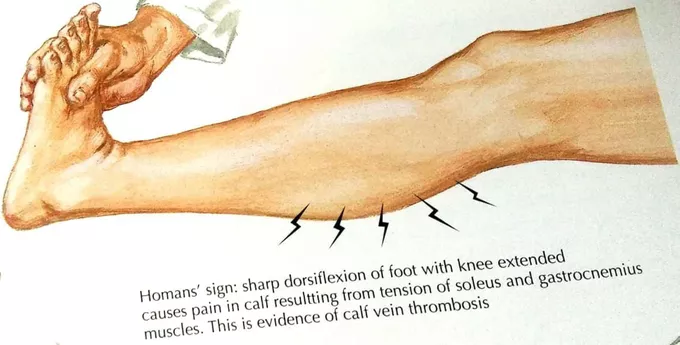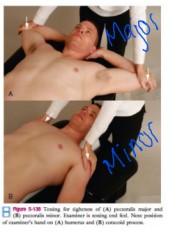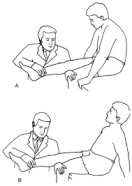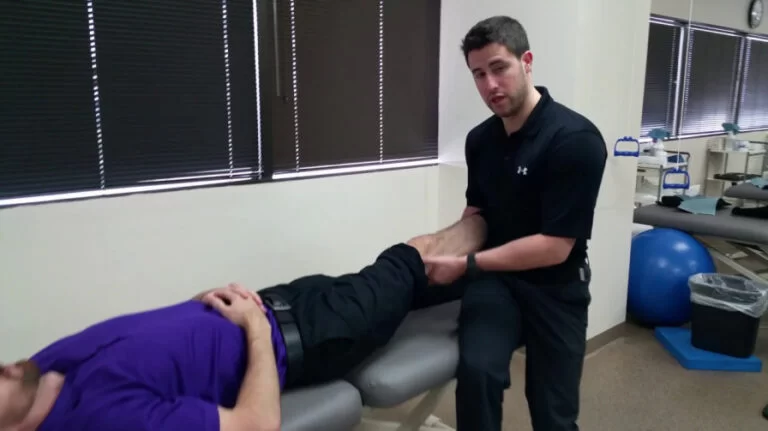Homan’s Sign Examination Test
What is a Homan’s Sign?
The Homan’s sign test, also known as the dorsiflexion sign test, is a physical examination procedure that is used to test for deep vein thrombosis (DVT). A deep vein thrombus, or DVT, develops most frequently in the leg. It is a serious condition that can lead to life-threatening complications, such as pulmonary embolism.
Purpose
A physical examination technique called the Homan’s sign test, is used to check for Deep Vein Thrombosis (DVT). In the presence of further clinical symptoms, a positive Homan’s sign may serve as an immediate DVT indicator.
Although it cannot be used to manage patients, clinical examination can, when done correctly, be helpful in determining whether further testing (such as the D-dimer test, ultrasonography, multidetector helical computed axial tomography (CT), and pulmonary angiography) is necessary.
Related History
When the foot is forced to dorsiflex, it causes discomfort behind the knee, according to John Homans’ 1941 definition. Homans redefining the Homans sign in 1944 after numerous instances of false-positive Homans’ signs were reported, saying that “discomfort need have no part in the reaction” and that increased resistance, involuntary flexion of the knee, or pain in the calf upon forced dorsiflexion should be considered positive responses.
How to Perform The Homan’s Sign?
The patient is placed in the supine posture as the Homans Sign test is performed. The examiner raises the affected leg and quickly extends the patient’s knee while dorsiflexing the patient’s foot. The examiner palpates the calf while performing this maneuver again with the patient’s knee bent.
Evidence
Mechanical traction on the posterior tibial vein is caused by passive, sudden, and forced ankle dorsiflexion with minimal knee flexion. The lower limb’s pain-sensitive tissues are stimulated by this traction.
Intervertebral disc herniation, ruptured Baker’s cyst, neurogenic claudication, gastrocnemius spasm, and cellulitis are a few different diagnoses for disorders that have a positive Homan’s sign.
Accuracy
Homan’s sign can be helpful if used in along with more precise diagnostic techniques like venography and ultrasonography because it has a low sensitivity and specificity for detecting DVT.
Sensitivity/Specificity
Since a positive sign does not necessarily indicate DVT and a negative sign does not necessarily rule it out, it is believed to have a sensitivity of 10-54% and a specificity of 39-89% and is therefore not considered to have any diagnostic significance.
Even so, it is frequently used in clinical practice, probably as a result of both its historical use and its simplicity of gathering information prior to the development of more reliable diagnostic procedures (such a D-dimer titration or a Doppler ultrasonography). The senior population’s high D-dimer has little prognostic value for deep vein thrombosis. General DVT signs and symptoms are only useful to assess the possibility of a DVT; they are not sensitive or specific enough to make a diagnosis.
Precaution
This test may be risky because surgeons use vigorous foot dorsiflexion to remove clot from the veins.
How to avoid Common mistakes?
Examiners frequently make the mistake of not dorsiflexing the patient’s foot enough to obtain an accurate reading. Additionally, the patient’s knee must be fully extended.
Limitation
Here are some of the limitations of the Homan’s sign test:
- It is not very sensitive for DVT, meaning that it may be negative in a significant proportion of patients with DVT.
- It is not very specific for DVT, meaning that it may be positive in a significant proportion of patients without DVT.
- It is less accurate in patients with certain conditions, such as obesity, calf muscle cramps, and recent surgery.
More precise diagnosis Test Besides the Homans sign, DVT tests also include:
- Contrast venography,
- Doppler and B-mode ultrasound,
- Venous duplex imaging,
- Impedance plethysmography
Importance to Physiotherapists
While a patient is bedridden or unconscious, the Homan’s sign test may be a quick and simple technique to evaluate whether they might be experiencing a DVT and, if so, to proceed with caution while performing certain lower-limb movements.
Conclusion
Despite its limitations, the Homan’s sign test remains a quick and easy way to screen for DVT. It is particularly useful in patients with clinical findings suggestive of DVT, such as calf pain, swelling, and redness.
References
- Homan’s Sign Test. (n.d.). Physiopedia. https://www.physio-pedia.com/Homan%27s_Sign_Test
- Ambesh, P., Obiagwu, C., & Shetty, V. (2017, May 1). Homan’s sign for deep vein thrombosis: A grain of salt? Indian Heart Journal; Elsevier BV. https://doi.org/10.1016/j.ihj.2017.01.013
- O. (2023, September 1). Homans Sign Test 2023. OrthoFixar. https://orthofixar.com/special-test/homans-sign/
- O. (2023, September 1). Homans Sign Test 2023. OrthoFixar. https://orthofixar.com/special-test/homans-sign/
- image – Homan’s sign – MEDizzy. (n.d.). https://medizzy.com/feed/3884675







